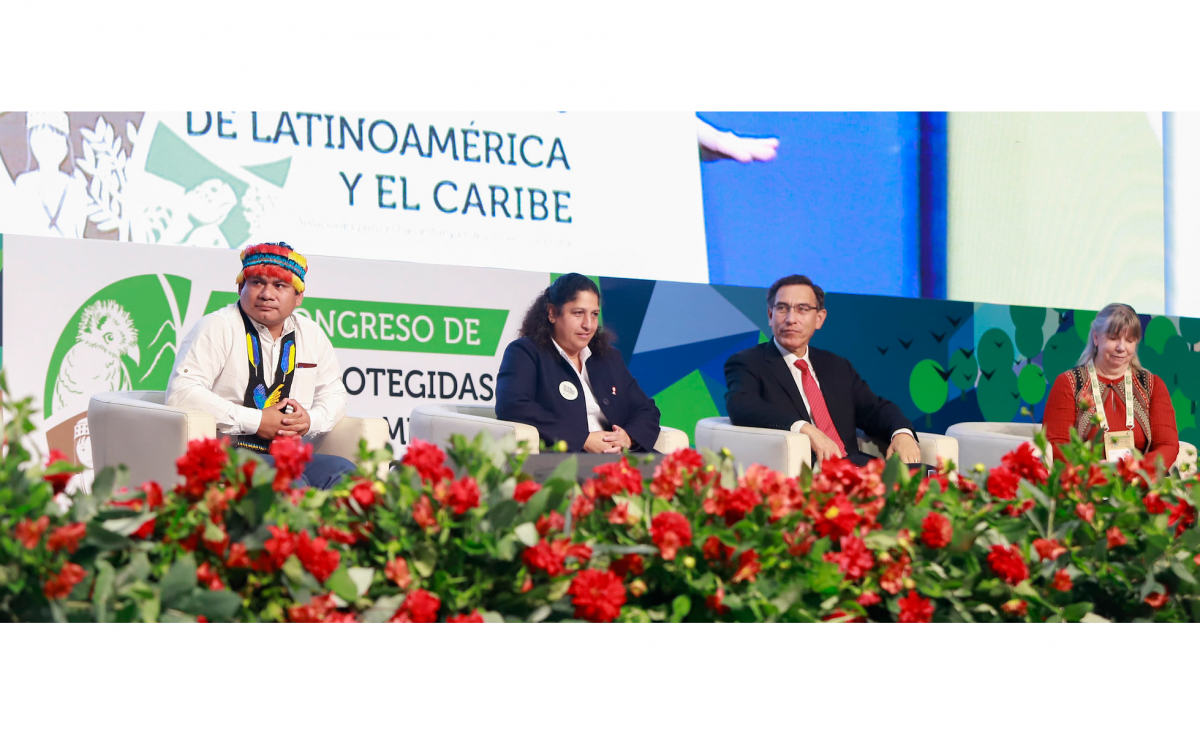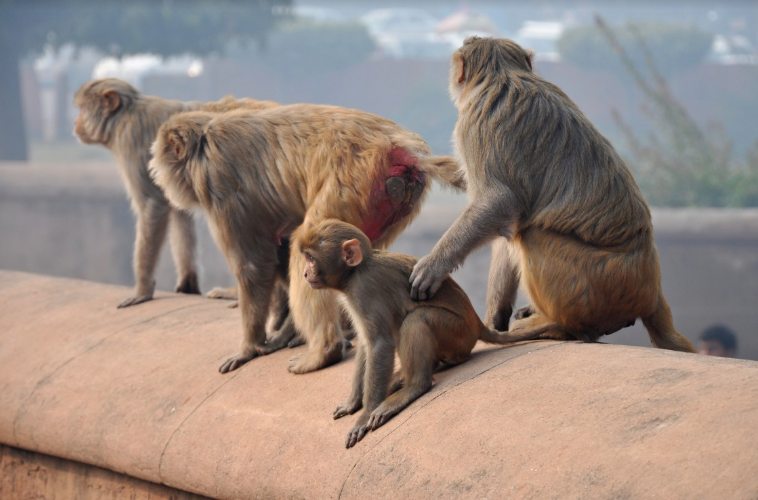Forthcoming Lima Declaration closes CAPLAC congress, attended by regional political and conservation leaders
Caribbean and Latin American voices were raised and heard during CAPLAC III, the third Latin American and Caribbean Protected Areas Congress. By the close, these voices were distilled into the Lima Declaration, ready for the IUCN World Conservation Congress in June 2020.
The third CAPLAC took place from 14-17 October 2019, in Lima, Peru, with the overarching theme of ”Solutions for welfare and sustainable development”. Its purpose: a space for exchange and debate on the formulation and implementation of public policies and research on Protected Areas.
The Congress outcomes reflect the debates and conclusions of the region and will inform the regional position for the IUCN World Conservation Congress 2020. CAPLAC III also generated inputs for discussions at UNFCCC COP25 on Climate Change, the Convention on Biological Diversity COP15, and the next IUCN World Parks Congress.
CAPLAC’s roots
Created in 1997, the congress is an initiative of IUCN and its World Commission on Protected Areas (WCPA), bringing together societal actors to strengthen their capacities, a means of promoting protected areas as nature-based solutions to the challenges facing society.
Previous editions were held in Santa Marta, Colombia (1997) and Bariloche, Argentina (2007).
In the first major conversation panel during CAPLAC, Jorge Nahuel, of the Mapuche Confederation of Argentina, highlighted the evolution of the relationship between indigenous peoples and the conservation of biodiversity. The meeting twelve years ago, in his opinion,
"marked a milestone to begin the reconciliation of indigenous peoples with conservation."
Commitment from Peru
Mr Martín Vizcarra, president of the Republic of Peru, in his opening address, emphasized the characteristics of his biodiverse country, a cradle of ancient cultures. He reaffirmed his country's commitment to biodiversity conservation, the care and protection of the environment, and sustainable development. This was borne out by his country’s new commitments to the IUCN Green List of Protected Areas made during the Congress.
He noted that the world faces a biodiversity crisis and at the same time a climate crisis, calling it a “perfect storm." He reminded delegates that evidence suggests the need for more well-managed protected areas; a mosaic of conservation areas under different forms of governance allowing ecological restoration and sustainable use in contiguous areas and seascapes.
Tuntiak Katán, representative of the Coordinator of Indigenous Nationalities of the Amazon Basin, spoke on behalf of his government: “We propose initiatives to build processes of intercultural diversity conservation. In recent times the scientific world recognizes that indigenous peoples are the ones that best preserve the territories".
Mr Katán indicated that the government will need to propose a legal guarantee in perpetuity to Peru’s indigenous peoples.
Fabiola Muñoz, Minister of Environment of Peru, stressed the need for development to be sustainable, including protected areas as “a low emission development option, inclusive and competitive, within a circular economy approach.”
Other countries record their successes and look forward to more, post-2020
Carolina Morgado, Executive Director of Tompkins Conservation Chile, said that the experience of 26 years of work in Chile and Argentina has resulted in the establishment of 12 new national parks, while enhancing other conservation areas through land donations. The initial distrust of environmental philanthropy, which was new to the region, was highlighted. Despite this, the success of the model had facilitated the creation of protected areas which could be returned to the public domain.
Some other highlights of the Congress
- 60 women of 14 Latin American and Caribbean countries met to build the Latin American and Caribbean Women's Agenda in Conservation.
- Peru declared its goal for the Bicentennial is to establish two new marine protected natural areas: "Dorsal de Nasca (Ica) and Peruvian Tropical Sea (Piura and Tumbes)”.
- The WCPA Kenton Miller and Fred Packard awards, highlighting innovation and exceptional contribution of protected areas were presented to outstanding conservationists past and present.
- The IUCN Green List Standard was presented as a way to inspire all conservationists seeking success in the management of protected areas.
- Indigenous peoples and traditional communities were front and centre in multiple events as key actors in the governance of protected and conserved areas. Since CAPLAC II in Bariloche, 2007, indigenous peoples and local communities have become increasingly recognised, reinforced by implementation of global commitments in subsequent events in Barcelona (2008), Sydney (2014), and Hawaii (2016).
- CAPLAC III will be carbon neutral thanks to the contributions of Peru's protected areas.
- "The Flavors and Knowledge of Protected Areas" was an event celebrating World Food Day at CAPLAC.
- Peru and Chile signed a mutual agreement to strengthen effective management of protected areas and actions against forest fires.
- In an event titled, "Defenders of Nature", tools were discussed to help in understanding and overcoming tensions and violence against environmental activism. The role of IUCN was highlighted as a leading organisation to monitor and demonstrate the range of performance of Environmental NGOs, allowing proof of the good work being done on the ground, a key step in defusing tension.
- The composition of the declaration of Lima was completed. The full, signed declaration will be available in November. Please check our Protected Areas News Site for details.
Who was behind the Congress organisation’s success?
The programme represents a joint effort by several organisations in the region, particularly the regional offices for Latin America and the Caribbean of the UN Food and Agriculture Organisation (FAO) and UN Environmental Programme (UNEP); IUCN Regional Office for Mexico, Central America and the Caribbean; IUCN Office for South America; IUCN World Commission on Protected Areas in South America; Red Latinoamericana de Cooperación Técnica en Parques Nacionales, otras Áreas Protegidas, Flora y Fauna Silvestres (REDPARQUES); IUCN Commission on Education and Communication (CEC); World Wildlife Foundation (WWF); National Service of Natural Protected Areas System of Peru (SERNANP); Instituto Chico Mendes — ICMBio (Brazil); Pronatura (Mexico) and National Natural Parks of Colombia.







